The Lemba tribe (from South_Africa) claim to be descendants from a lost tribe which fled from
modern Yemen and journeyed south.
Delphic Oracle: predicted the future based on water and leaves?
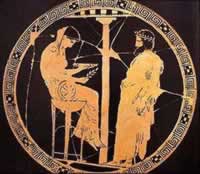 Delphi was the site of the most important oracle of the god Apollo. Delphi was revered throughout the
Greek world as the site of the omphalos stone, the centre of the universe. The oracle at that time
predicted the future based on the lapping water and leaves rustling in the trees. She sat on
the Sibylline Rock, or in a cauldron shaped bowl on top of a tripod, breathing in vapors from the
ground and gaining her often puzzling predictions from that.
Delphi was the site of the most important oracle of the god Apollo. Delphi was revered throughout the
Greek world as the site of the omphalos stone, the centre of the universe. The oracle at that time
predicted the future based on the lapping water and leaves rustling in the trees. She sat on
the Sibylline Rock, or in a cauldron shaped bowl on top of a tripod, breathing in vapors from the
ground and gaining her often puzzling predictions from that.
This oracle exerted considerable influence across the country, and was consulted before all major
undertakings: wars, the founding of colonies, and so forth. The oracle is also said to teached
Socrates of his own ignorance, and this claim is related to one of the most famous mottos: "know
thyself". Another famous motto of Delphi is: "nothing in excess".
Noah's Ark: could have carried that many animals?
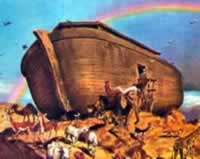 According to the Bible, Noah's Ark was a massive vessel built at God's command to save Noah, his
family, and a core stock of the world's animals from the Great Flood. The story is contained in the
Hebrew Bible's book of Genesis, chapters 6 to 9.
According to the Bible, Noah's Ark was a massive vessel built at God's command to save Noah, his
family, and a core stock of the world's animals from the Great Flood. The story is contained in the
Hebrew Bible's book of Genesis, chapters 6 to 9.
The Ark had a gross volume of about 1.5 million cubic feet (40,000 m³), a displacement a little less
than half that of the Titanic at about 22,000 tons, and total floor space of around 100,000 square
feet (9,300 m²). The question of whether it could have carried two (or more) specimens of the
various species (including those now extinct), plus food and fresh water, is a matter of much
debate, even bitter dispute, between literalists and their opponents.
According to one school of modern textual criticism—the documentary hypothesis—the Ark story told in
Genesis is based on two originally quasi-independent sources, and did not reach its present form
until the 5th century BC. The Ark story told in Genesis has parallels in the Sumerian myth of
Ziusudra, which tells how an ancient king was warned by his personal god to build a vessel in which
to escape a flood sent by the higher council of gods. Less exact parallels are found in other
cultures from around the world.
From Eusebius' time to the present, the physical Noah's Ark has held a fascination for
Christians—although not for Jews and Muslims, who seem to have felt far less impelled to seek out the
remains. There have been various and conflicted claims of Ark sightings, but they were all ultimately
shown to be at best false, and at worst hoaxes.
King Arthur: actually existed?
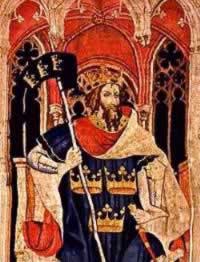 King Arthur is an important figure in the mythology of Great Britain, where he appears as the ideal
of kingship in both war and peace. He is the central character in the cycle of legends known as the
Matter of Britain. There is disagreement about whether Arthur, or a model for him, ever actually
existed.
King Arthur is an important figure in the mythology of Great Britain, where he appears as the ideal
of kingship in both war and peace. He is the central character in the cycle of legends known as the
Matter of Britain. There is disagreement about whether Arthur, or a model for him, ever actually
existed.
The historicity of the Arthur of legend has long been debated by scholars. One school of thought is
that Arthur was a Romano-British leader who lived sometime in the late 5th century to early 6th
century and fought against the invading Saxons. Other writers suggest that King Arthur should be
identified as one Lucius Artorius Castus, a Roman dux of the 2nd century, whose military exploits in
Britain may have been remembered for centuries afterwards. Another theory proposes that the real
Arthur was Artur Mac Aidan, a war leader of the Scots and Brythons. By this theory, Artur was
predominantly active in the region between the Roman walls — the Gododdin. Artur was never "king" per
se, but rather the son of the Scottish king Aidan Mac Gabran, who ruled from about 574 AD. Another
school of thought believes that Arthur had no historical existence, explaining that he originally was
a half-forgotten Celtic deity that devolved into a personage.
Ark of the Covenant: taken to heaven?
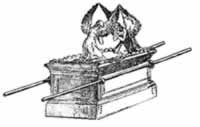 he Ark of the Covenant is described in the Hebrew Bible as a sacred container built at the command of
Moses, wherein rested the stone tablets containing the Ten Commandments. The Bible describes the Ark
as made of acacia or shittah-tree wood. It was a cubit and a half broad and high and two cubits long
(about 130 × 80 × 80 cm).
he Ark of the Covenant is described in the Hebrew Bible as a sacred container built at the command of
Moses, wherein rested the stone tablets containing the Ten Commandments. The Bible describes the Ark
as made of acacia or shittah-tree wood. It was a cubit and a half broad and high and two cubits long
(about 130 × 80 × 80 cm).
In contrast to the general consensus of historians (that supposes that the ark was taken away and
destroyed), variant traditions about the ultimate fate of the Ark include the intentional concealing
of the Ark under the Temple Mount, the removal of the Ark from Jerusalem in advance of the
Babylonians (this variant usually ends up with the Ark in Ethiopia), the removal of the Ark by the
Ethiopian prince Menelik I (purported son of King Solomon and the Queen of Sheba), removal by Jewish
priests during the reign of Manasseh of Judah, possibly taken to a Jewish temple on Elephantine in
Egypt, and the miraculous removal of the Ark by divine intervention (C.f. 2 Chronicles).
Atlantis: disappeared into the sea?
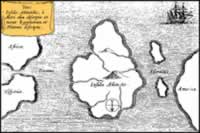 Atlantis is an ancient mythical island, whose existence and location have never been confirmed. The
first references to Atlantis are from the classical Greek philosopher Plato, who said it was engulfed
by the ocean as the result of an earthquake 9,000 years before his own time, which would be well into
the most recent Ice age. Plato claimed it was somewhere outside the Pillars of Hercules, now known as
the Strait of Gibraltar.
Atlantis is an ancient mythical island, whose existence and location have never been confirmed. The
first references to Atlantis are from the classical Greek philosopher Plato, who said it was engulfed
by the ocean as the result of an earthquake 9,000 years before his own time, which would be well into
the most recent Ice age. Plato claimed it was somewhere outside the Pillars of Hercules, now known as
the Strait of Gibraltar.
According to Critias, 9,000 years before his lifetime, a war took place between those outside the
Pillars of Heracles and those who dwelt within them. The Atlanteans had conquered the Mediterranean
as far east as Egypt and the continent into Tyrrhenia, and subjected its people to slavery. The
Athenians led an alliance of resistors against the Atlantean empire and as the alliance
disintegrated, prevailed alone against the empire, liberating the occupied lands. "But afterwards
there occurred violent earthquakes and floods; and in a single day and night of misfortune all your
warlike men in a body sank into the earth, and the island of Atlantis in like manner disappeared in
the depths of the sea."
There have been dozens—perhaps hundreds—of locations proposed for Atlantis. Most of the historically
proposed locations are in or near the Mediterranean Sea (islands such as Sardinia, Crete and
Santorini), and locations as far as Antarctica, Indonesia and the Caribbean. The submerged island of
Spartel near the Strait of Gibraltar is a proposed location which would coincide with some elements
of Plato's account; location (just outside the Pillars of Hercules) and date of submersion (9000
years before Plato).
Pope Joan: the female Catholic Pope?
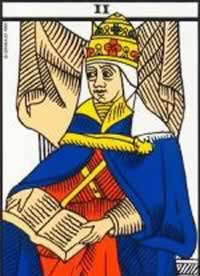 According to legend, Pope Joan was a female pope who allegedly reigned from 853 to 855. The Chronicon
Pontificum et Imperatum, by Martin of Opava, states that "It is claimed that this John was a woman,
who as a girl had been led to Athens dressed in the clothes of a man by a certain lover of hers.
There she became proficient in a diversity of branches of knowledge, until she had no equal, and
afterwards in Rome, she taught the liberal arts and had great masters among her students and
audience. A high opinion of her life and learning arose in the city, and she was chosen for pope.
While pope, however, she became pregnant by her companion. Through ignorance of the exact time
when the birth was expected, she was delivered of a child while in procession from St Peter's to the
Lateran, in a narrow lane between the Colisseum and St Clement's church. After her death, it is said
she was buried in that same place."
According to legend, Pope Joan was a female pope who allegedly reigned from 853 to 855. The Chronicon
Pontificum et Imperatum, by Martin of Opava, states that "It is claimed that this John was a woman,
who as a girl had been led to Athens dressed in the clothes of a man by a certain lover of hers.
There she became proficient in a diversity of branches of knowledge, until she had no equal, and
afterwards in Rome, she taught the liberal arts and had great masters among her students and
audience. A high opinion of her life and learning arose in the city, and she was chosen for pope.
While pope, however, she became pregnant by her companion. Through ignorance of the exact time
when the birth was expected, she was delivered of a child while in procession from St Peter's to the
Lateran, in a narrow lane between the Colisseum and St Clement's church. After her death, it is said
she was buried in that same place."
Pope Joan is regarded by some historians as an anti-papal satire, though it enjoys an air of
plausibility due to certain elements related in the story.
Garden of Eden: where was it?
 The Garden of Eden is described by the Book of Genesis as being the place where the first man - Adam
- and woman - Eve - lived after they were created by God. The past physical existence of this garden
forms part of the creation belief of the Abrahamic religions.
The Garden of Eden is described by the Book of Genesis as being the place where the first man - Adam
- and woman - Eve - lived after they were created by God. The past physical existence of this garden
forms part of the creation belief of the Abrahamic religions.
The Genesis account supplies the geographical location of Eden in relation to four major rivers.
However, because the identification of these rivers has been the subject of much controversy and
speculation. Most put the Garden somewhere in the Middle East near Mesopotamia. Locations as
diverse as Ethiopia, Java, Sri Lanka, the Seychelles, Brabant, and Bristol, Florida have all been
proposed as locations for the garden. A substantial consensus now exists that the knowledge of the
location of Eden has been lost.
The Garden of Eden story recounts that God placed Adam and Eve in a garden, which they were to tend
and which contained many plants they were to enjoy. God commanded them not to eat from the Tree of
Knowledge of Good and Evil, and they were expelled from the garden after they disobeyed Him, having
been tempted by a serpent, and having eaten of the "fruit". The Tree of Life, also planted in the
garden, was then denied them by means of a physical barrier, a cherubim and a flaming sword, at the
entrance to the garden.
Christianity associates the serpent with Satan, based on the correspondence between Genesis and
Revelation. However, an early Gnostic Christian sect, known as the Ophites, turned this on its head,
worshipping the serpent as the hero trying to impart gnosis, and casting God as the evil
villain trying to imprison them in the creation of the demiurge.
Knights Templar: had the Holy Grail?
The Knights Templar, was one of the most famous of the Christian military orders. It existed for
about two centuries in the Middle Ages, created in the aftermath of the First Crusade of 1096 to
ensure the safety of the large numbers of European pilgrims who flowed towards Jerusalem after its
conquest.
The Templars were an unusual order in that they were both monks and soldiers, making them in
effect some of the earliest "warrior monks" in the Western world. Members of the Order played a key
part in many battles of the Crusades, and the Order's infrastructure innovated many financial
techniques that could be considered the foundation of modern banking. The Order grew in membership
and power throughout Europe, until it was charged with heresy and other crimes by the French
Inquisition under the influence of the French King Philip IV and was forcibly disbanded in the early
1300s.
The Knights Templar have become surrounded by legends concerning secrets and mysteries handed down to
the select from ancient times. Most of these legends are connected with the long occupation by the
order of the Temple Mount in Jerusalem, and speculation about what relics the Templars may have
found there, such as the Holy Grail, the Ark of the Covenant, or fragments of the True Cross from
the Crucifixion.
Submit to:
 Del.icio.us
Del.icio.us
 Netscape
Netscape
 Furl
Furl
 Facebook
Facebook
 |
|
|
|
|
|
 Send by Email Send by Email
|
�


 Del.icio.us
Del.icio.us
 Netscape
Netscape
 Furl
Furl
 Facebook
Facebook
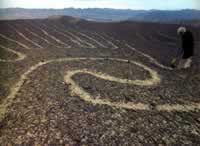 The Nazca Lines are geoglyphs (drawings on the ground) located in the Nazca Desert (Peru). The
drawings include a hummingbird, monkey, spider and lizard, to name only a few of the over 300
drawings. They were created during the Nazca culture in the area, between 200 BC and 600 AD.
The Nazca Lines are geoglyphs (drawings on the ground) located in the Nazca Desert (Peru). The
drawings include a hummingbird, monkey, spider and lizard, to name only a few of the over 300
drawings. They were created during the Nazca culture in the area, between 200 BC and 600 AD.
 These are the ancient Tribes of Israel that disappear from the Biblical account after the Kingdom of
Israel was totally destroyed, enslaved and exiled by ancient Assyria.
These are the ancient Tribes of Israel that disappear from the Biblical account after the Kingdom of
Israel was totally destroyed, enslaved and exiled by ancient Assyria.
 Delphi was the site of the most important oracle of the god Apollo. Delphi was revered throughout the
Greek world as the site of the omphalos stone, the centre of the universe. The oracle at that time
predicted the future based on the lapping water and leaves rustling in the trees. She sat on
the Sibylline Rock, or in a cauldron shaped bowl on top of a tripod, breathing in vapors from the
ground and gaining her often puzzling predictions from that.
Delphi was the site of the most important oracle of the god Apollo. Delphi was revered throughout the
Greek world as the site of the omphalos stone, the centre of the universe. The oracle at that time
predicted the future based on the lapping water and leaves rustling in the trees. She sat on
the Sibylline Rock, or in a cauldron shaped bowl on top of a tripod, breathing in vapors from the
ground and gaining her often puzzling predictions from that.
 According to the Bible, Noah's Ark was a massive vessel built at God's command to save Noah, his
family, and a core stock of the world's animals from the Great Flood. The story is contained in the
Hebrew Bible's book of Genesis, chapters 6 to 9.
According to the Bible, Noah's Ark was a massive vessel built at God's command to save Noah, his
family, and a core stock of the world's animals from the Great Flood. The story is contained in the
Hebrew Bible's book of Genesis, chapters 6 to 9.
 King Arthur is an important figure in the mythology of Great Britain, where he appears as the ideal
of kingship in both war and peace. He is the central character in the cycle of legends known as the
Matter of Britain. There is disagreement about whether Arthur, or a model for him, ever actually
existed.
King Arthur is an important figure in the mythology of Great Britain, where he appears as the ideal
of kingship in both war and peace. He is the central character in the cycle of legends known as the
Matter of Britain. There is disagreement about whether Arthur, or a model for him, ever actually
existed.
 he Ark of the Covenant is described in the Hebrew Bible as a sacred container built at the command of
Moses, wherein rested the stone tablets containing the Ten Commandments. The Bible describes the Ark
as made of acacia or shittah-tree wood. It was a cubit and a half broad and high and two cubits long
(about 130 × 80 × 80 cm).
he Ark of the Covenant is described in the Hebrew Bible as a sacred container built at the command of
Moses, wherein rested the stone tablets containing the Ten Commandments. The Bible describes the Ark
as made of acacia or shittah-tree wood. It was a cubit and a half broad and high and two cubits long
(about 130 × 80 × 80 cm).
 Atlantis is an ancient mythical island, whose existence and location have never been confirmed. The
first references to Atlantis are from the classical Greek philosopher Plato, who said it was engulfed
by the ocean as the result of an earthquake 9,000 years before his own time, which would be well into
the most recent Ice age. Plato claimed it was somewhere outside the Pillars of Hercules, now known as
the Strait of Gibraltar.
Atlantis is an ancient mythical island, whose existence and location have never been confirmed. The
first references to Atlantis are from the classical Greek philosopher Plato, who said it was engulfed
by the ocean as the result of an earthquake 9,000 years before his own time, which would be well into
the most recent Ice age. Plato claimed it was somewhere outside the Pillars of Hercules, now known as
the Strait of Gibraltar.
 According to legend, Pope Joan was a female pope who allegedly reigned from 853 to 855. The Chronicon
Pontificum et Imperatum, by Martin of Opava, states that "It is claimed that this John was a woman,
who as a girl had been led to Athens dressed in the clothes of a man by a certain lover of hers.
There she became proficient in a diversity of branches of knowledge, until she had no equal, and
afterwards in Rome, she taught the liberal arts and had great masters among her students and
audience. A high opinion of her life and learning arose in the city, and she was chosen for pope.
While pope, however, she became pregnant by her companion. Through ignorance of the exact time
when the birth was expected, she was delivered of a child while in procession from St Peter's to the
Lateran, in a narrow lane between the Colisseum and St Clement's church. After her death, it is said
she was buried in that same place."
According to legend, Pope Joan was a female pope who allegedly reigned from 853 to 855. The Chronicon
Pontificum et Imperatum, by Martin of Opava, states that "It is claimed that this John was a woman,
who as a girl had been led to Athens dressed in the clothes of a man by a certain lover of hers.
There she became proficient in a diversity of branches of knowledge, until she had no equal, and
afterwards in Rome, she taught the liberal arts and had great masters among her students and
audience. A high opinion of her life and learning arose in the city, and she was chosen for pope.
While pope, however, she became pregnant by her companion. Through ignorance of the exact time
when the birth was expected, she was delivered of a child while in procession from St Peter's to the
Lateran, in a narrow lane between the Colisseum and St Clement's church. After her death, it is said
she was buried in that same place."
 The Garden of Eden is described by the Book of Genesis as being the place where the first man - Adam
- and woman - Eve - lived after they were created by God. The past physical existence of this garden
forms part of the creation belief of the Abrahamic religions.
The Garden of Eden is described by the Book of Genesis as being the place where the first man - Adam
- and woman - Eve - lived after they were created by God. The past physical existence of this garden
forms part of the creation belief of the Abrahamic religions.






























